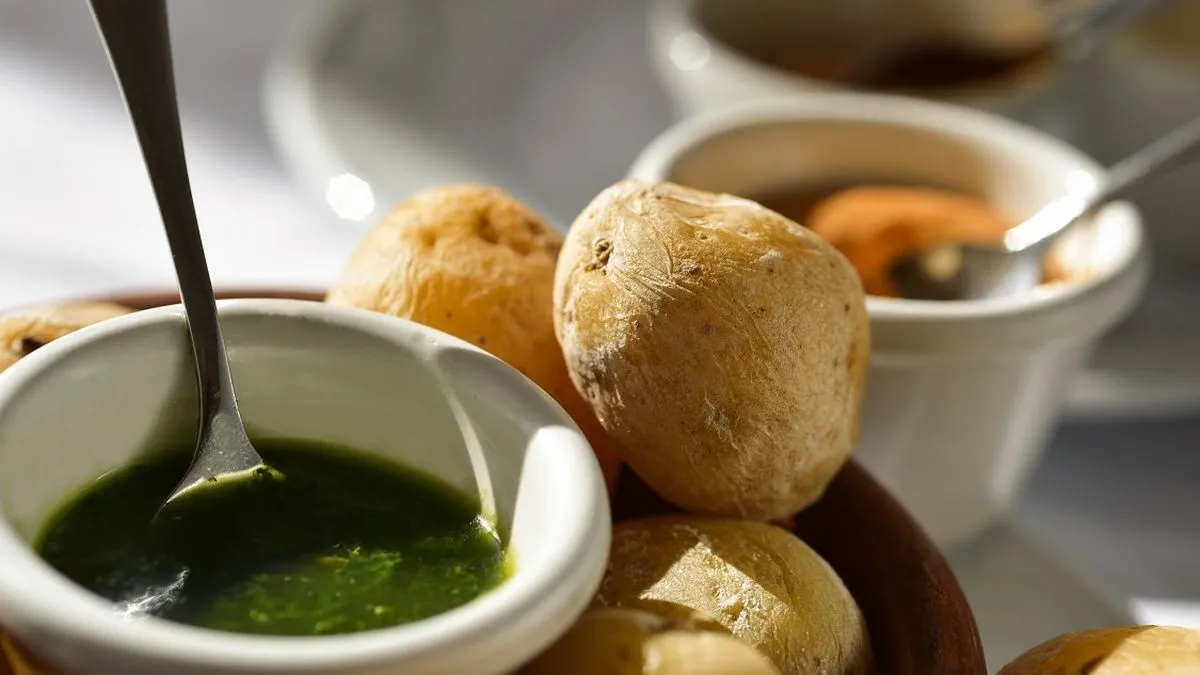Must-try Canary Island’s food specialities
Friday 30 July 2021

When holidaying to a far off and exotic place, one of the greatest excitements is the new cuisine you’ll try on your journey. When you are going on one of our Canary Islands cruises, that excitement is well placed and the amazing blend of Spanish influence and north African heat allows for some tantalising local delicacies. The conditions on the islands make for a fantastic growing environment, meaning the produce is incredible. Also, the small sub-cultures on the individual islands mean you’ll find many twists on the dishes as you travel around.
READ MORE: Which country's cuisine is the most popular?
In this article, we will look at some of the must-try Canary Island’s food specialities.
Mojo
One of the pillars of Canarian cuisine and the best place to start with this guide is mojo. Mojo sauces are prominent the world over, but it was in the Canary Islands where they originated. Mojo is a sauce that’s used in cooking and served alongside dishes and can have various levels of spice. It’s made from a base of olive oil with peppers added along with garlic, paprika and other spices.
When visiting the island on a Canaries cruise, you’ll have a hard time finding a restaurant or café without this on the menu. You’ll tend to find two types of mojo, green mojo, or mojo verde, made with green peppers and red mojo, or mojo rojo, made with red peppers. However, there are variations of these and local variations of mojo too. For example. In La Palma they also have a mojo with cheese called mojo con queso. In La Gomera on you’ll find almogrote, which is a variation of mojo rojo with cheese with a paste-like texture.
READ MORE: What to do in Las Palmas, Gran Canaria on your stopover
Papas Arrugadas
Papas arrugadas is one of the most iconic and recognisable Canary Island’s dishes out there. Also known around the world as wrinkled potatoes due to their appearance, this dish is a simple one and just consists of local potatoes and mojo, usually served with both mojo verde and mojo rojo.
The uniqueness of this Canarian dish is actually not in the preparation at all (boiling the potatoes in saltwater) but the growing of the potatoes, which is why if you try this dish anywhere else in the world, even somewhere like mainland Spain, it won’t taste the same. This is because of the volcanic soil on the Canary Islands which gives the potatoes a rich and distinctive flavour.
Suzanne Jones, a blogger at The Travel Bunny, recommends this dish: “Canarian potatoes are my absolute favourite dish to eat in the Canaries. The wrinkled little potatoes might not look that appetising, but they are totally delicious. They're boiled up with lots of salt before being drained and shaken around until they softly shrivel. Inside they're soft and fluffy with a nutty taste which contrasts nicely with the salty skin. Dip the papas into mojo sauce.”

Pella de Gofio
Another key Canarian ingredient that you’ll find being used in many dishes is gofio. Gofio is a flour made of a mixture of grains and has a long history on the islands. Nowadays, you’ll find gofio used in a range of dishes – you can even get gofio flavoured ice cream!
The dish we want to highlight is pella de gofio, which can be made either sweet or savoury. It’s a very simple recipe and just consists of the flour being made into a paste and being flavoured with either salt or sweet ingredients like sugar, honey and banana. It’s certainly one of the most understated Canary Island food recipes but is truly unique and we recommend you give it a try whilst visiting the islands.
Puchero Canario
Something a bit more hearty that’s perfect for an evening meal is Puchero Canario, literally meaning Canary Island stew. This dish is made from a range of vegetables including pumpkin, cabbage and sweet potato with pork and beef. Spiced with saffron and parsley, the dish is great for those who don’t like a lot of spice but have a stunning flavour and really shows off the local produce.
Something unique about this dish and how it’s eaten is that it’s actually traditionally consumed in two parts, so don’t worry if you order it in a restaurant and feel like you’ve not been given any of the ingredients! For your first course, you’ll be given the broth which has been drained from the stew and for your second course you’ll get the meat and vegetables

Wine
When envisioning fantastic wine regions, many people often won’t cast their mind to the Canaries. However, the growing conditions provided by the volcanic soil and hot sun are perfect for creating exceptionally deep and flavourful wines. Six of the islands produce their owns wines, these are: Tenerife, Lanzarote, Gran Canaria, La Palma, El Hierro and La Gomera. As well as having the perfect conditions, Canarian winemakers also have extremely old vines. Thanks to the remoteness of the islands the vines have never been contaminated or infected and therefore are thought to be hundreds of years old. This just adds to the complexity of the wines being created on the islands.
Erica, from Get Up, Get Out, Get Lost, also recommended the wine to us: “Go for a semisweet white wine from the volcanic vineyards in Lanzarote. The northernmost island of Lanzarote is internationally known for their unique wine-producing techniques amid solidified black lava and ash. They produce both red and white wine, but their sweet and semisweet white wines are known for light, aromatic notes and are perfect for keeping cool under the Canary Island sun.”
Amy from The Traveler’s Journey recommended the Malvasia, she said: “Wine is a food group, right? We were amazed by Lanzarote's Mars-like wine country, spread out across fields of lava. With old vines dating back to the 1500s, each protected from harsh winds and sun by crescent-shaped barriers of lava rock piled high, the sights were enough to write home about, and that's not to mention the taste. The crisp, mineral-forward Malavasia sent my husband and I into a tailspin: how had we never heard of this varietal before, and more importantly, where could we find it back home?”
Must-try Canary Island’s food specialities
Mojo
Papas Arrugadas
Pella de Gofio
Puchero Canario
Ropa Vieja
Wine
With all of these local delicacies and many more, you can be sure the Canary Island’s food scene is not to be underestimated. Now you know what dishes are typical in the Canary Islands, we are sure waiting for your departure date will because that much harder!
For more tips, guides, and advice, make sure to visit our blog page.


